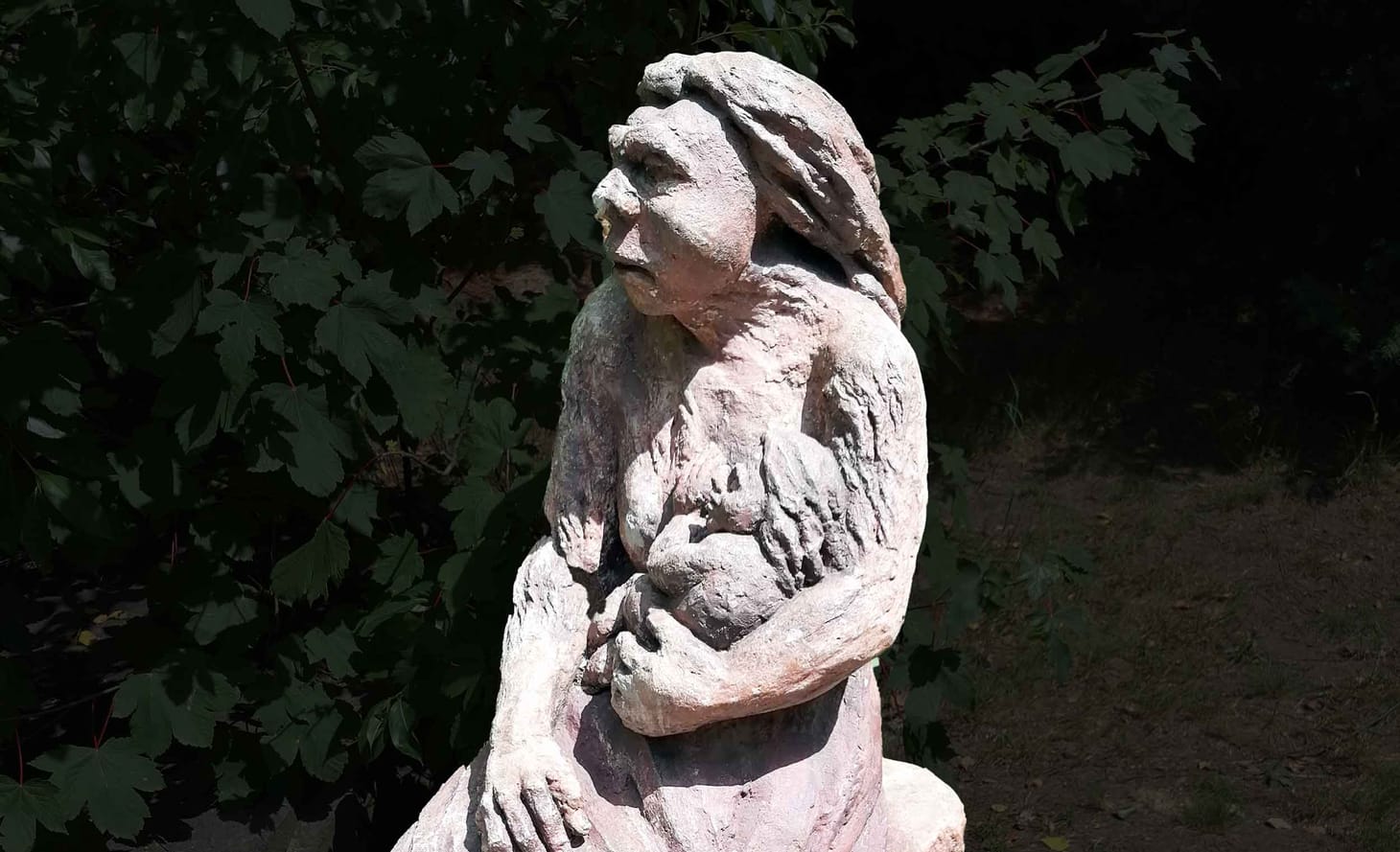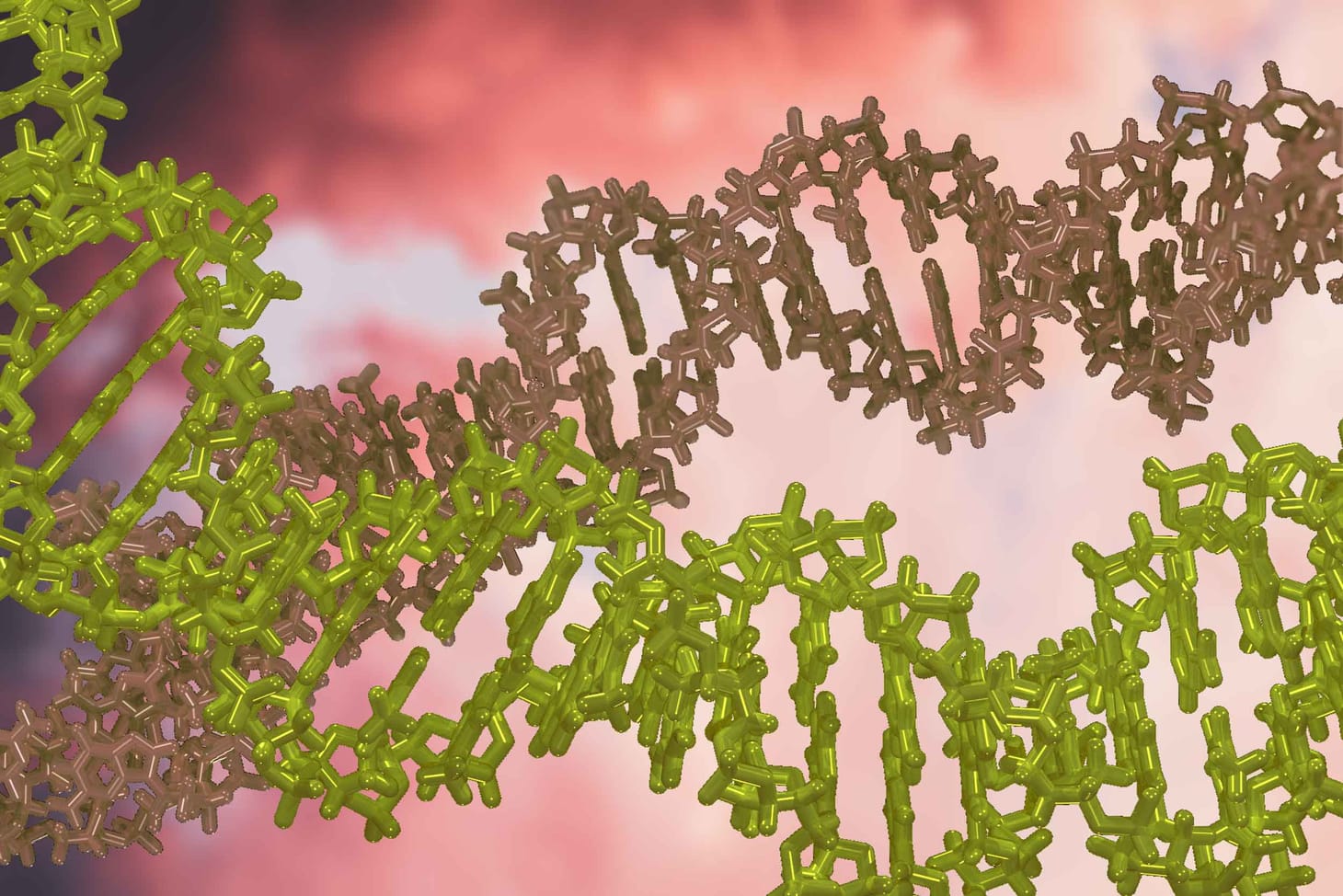Human evolution stopping? Wrong, wrong, wrong.
I look into arguments by the geneticist Steve Jones that human evolution has stopped. It hasn't.

I’m usually pretty measured when I respond to dumb ideas about evolution reported in the press. After all, scientists are often misquoted, or misunderstood by reporters. So, I didn’t really think it was worth writing about this story covering a lecture by UCL geneticist Steve Jones. After all, I’m hardly going to attend a faculty talk in London, and there’s really no news here–Jones has been arguing for more than ten years that human evolution has slowed or stopped.
For example, this 1995 article in the NY Times describes his book, The Language of Genes:
"Natural selection has to some extent been repealed" in the case of humans, says Dr. Steve Jones, a geneticist at University College London. Most social changes "seem to be conspiring to slow down human evolution," he argues[.]
His ideas have been publicized for years outside of his books; for example, a 2002 public debate.
But this latest Steve Jones kerfuffle seems to have impressive reach. It hit Slashdot, for goodness’ sake. The Guardian has pubished an exchange of opinion pieces about it. Bloggers of note have picked it up, almost universally to criticize it as a wrong idea.
Why it's wrong
What I haven’t yet seen, in all the commentary, is a short and simple refutation for each element of his argument. Let me lay out the components of Jones’ argument, as explained in the current article and previous works:
1. Evolution includes natural selection, mutation, and random change.
Jones excludes gene flow, one of the usual four mechanisms of evolution – this allows him later to argue that population mixing is a sign of evolution stopping, when in fact it is evolution.
2. Older fathers have a higher mutation rate than younger fathers or mothers, and the proportion of older fathers is now much less than in the past.
This is true, but minor compared to the main factor affecting the introduction of mutations into human populations: the population size. The rate of new mutations in the population is 2Nu, where u is the rate per individual, and N the number of people. The population of the world has increased tenfold since 1700. All other things equal, this means ten times as many mutations – and twice as many mutations per generation today as in 1960. There are a smaller proportion of older fathers now than in 1700, but the absolute number of older fathers is much, much greater.
Besides all this, the story of paternal age at birth is not so simple. Over the past twenty years in the U.S., the birth rate to fathers over 35 has been increasing, while the birth rate to fathers under 30 years has been decreasing. Reproduction in men aged 20-35 grew markedly after World War II, but the fraction of births to older fathers has been climbing since 1970. To be sure, the current rate of births to older fathers remains substantially less than before 1940, but this is part of an overall reduction in fertility across all age classes. Over the past 200 years, a reduction in average male fertility has been made up by an increase in infant and juvenile survival, so even though the birth rate to older (and younger) fathers declined, the population size continued to grow.
3. Mortality of young people has reduced to near-zero.
Jones acknowledges that this is only true in industrialized economies, so I’ll set aside the obvious point (also made by Chris Stringer in this article): Mortality is still high among young people in a global context.
But Jones entirely neglects fertility. Fertility selection depends on the variance in lifetime reproduction (some people have more children than others), as well as the variance in age at reproduction (some people have children earlier than others). Selection does not stop, even if mortality does. He also neglects the high human rate of spontaneous abortion, a continuing source of mortality selection.
Also, the decrease in mortality means that some mutations that once were deleterious are now neutral. These mutations now will be retained in the population rather than rapidly eliminated, and some of them will increase under genetic drift. In terms of the rate of change in frequency of these previously rare deleterious alleles, this means that the population will henceforth evolve more, not less.
4. Small isolated populations allow rapid evolution by drift. But today’s population is large and highly interconnected.
There’s no denying this, at least if we’re talking about the rate of change of allele frequencies within each small population. However, the rate of fixation of neutral alleles is independent of population size. And the global rate of evolution is far slower in a network of partially isolated subpopulations than in a single large population. So this argument depends on what we mean by “evolution.” Here’s what we have from Jones in this context:
Small populations which are isolated can evolve at random as genes are accidentally lost. Worldwide, all populations are becoming connected and the opportunity for random change is dwindling. History is made in bed, but nowadays the beds are getting closer together. We are mixing into a global mass, and the future is brown.
Jones’ definition of evolution (in argument 1, above) leads inevitably to confusion here. Clearly, this “mixing into a global mass” is actually rapid evolution of human populations, measured in terms of changes in allele frequencies. If Europe becomes “brown” in 500 years, that’s a whole lot faster than the 20,000 years it took Europe to become “non-brown.” Jones apparently means that sometime in the future, after this current, rapid period of evolutionary change, human evolution will be slow.
But he’s wrong. Mutations will be entering this large population faster than in the smaller global population of the past. This future population will be vastly more variable than any of the small human populations of today. Alleles under selection will be able to move and mix much faster than through the disjointed network of population contacts that existed 200 years ago. Only by one measure will evolution be slower: the rate of change in frequency of neutral mutations. But even that will be faster in the mixed future than the semi-isolated past, if we consider it globallyinstead of locally.
Longevity
Several respondents to Jones’ arguments have taken an approach that I think is misguided. Pointing out that human longevity was much lower in the past, they argue that a much lowerproportion of children were being born to older fathers.
Actually, longevity has a very limited application to this argument. The high juvenile and infant mortality rates of the past have no influence on the average age of fathers at reproduction, since fathers are a subset of people who survive juvenile and infant mortality. For example, in the U.S. around 1850, only around 60 percent of all people born would survive to age 20. These deaths greatly reduced the average longevity, but had no effect at all on the proportion of births to older fathers.
What matters is the fraction of young men (20-30) who survive to be older men (35-50). That fraction was high: roughly 85% of twenty-year-old men in the U.S. in 1850 survived to age 35, and two thirds survived to age 50. Older men were fathering a large fraction of the infants in early America and in pre-industrial populations. This is because once they started, they didn’t stop, as long as they had a wife who could have children (and widowers often remarried). This was probably true in all agricultural societies, and likely in modern human hunter-gatherers back to 30,000 years ago or earlier. If we go back further in time, we find a much higher mortality rate among young men, so that fathers over 35 made much less of a contribution. But in historic times, older fatherhood has been very important to rate of new mutations per individual.
What’s important is that (a) the proportional reduction of older fatherhood is a small effect compared to the increase in mutations due to the growth of the population, (b) part of the decline of birth rates to older men is compensated by a reduction of infant and juvenile mortality, and (c) older fatherhood is now rising, not falling.
I think Jones ought to pursue a far more interesting interpretation of these facts. European and American men today are increasingly pursuing part of a reproductive strategy that was common in the past, but less common in postwar Europe and America. Today, with lower infant and childhood mortality, the consequences of that strategy are potentially more powerful than in the past.
Bottom line
As always, claims about the rate of evolution in the future depend only slightly on empirical observations, and mainly on assumptions. In this case, Steve Jones has defined the “rate” of evolution in a very particular way, to come to the story that he prefers.
I generally don’t mind when prominent people say silly things about evolution. It gives the rest of us a chance to explain why they’re wrong, and teach about the mathematical basis of evolution as we do it. In this case, it’s sort of sad: Jones is out there making arguments and selling books, but he’s clearly trapped in the pre-genome era. The exciting thing about genetics today is the extent to which we can observe human evolution happening!
There’s also an antiquated version of ethnocentrism here: how can we talk about the future of human evolution without considering the intense dynamics in today’s developing nations? Relative to Africa and Asia, Europe is now a population sink.
John Hawks Newsletter
Join the newsletter to receive the latest updates in your inbox.



